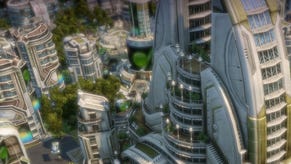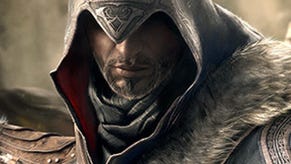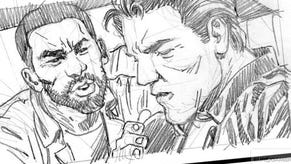Making Driver: San Francisco 60FPS
Reflections' virtual city and fixing bugs.
UK studio Reflections has explained its decision to make the single-player portion of Driver: San Francisco run at 60 frames per second – and revealed the challenges doing so presented the development team.
Art director Mike Haynes told an audience at GDC Europe 2011, attended by Eurogamer today, that dropping to 30FPS would have allowed the team to double its budget for adding detail to the game world – but insisted 60FPS has its benefits.
"A question we get is, is it worth it? Can you even tell? From a gameplay standpoint, and within the engine itself, we did have a toggle that would allow you to switch to 30. And it was very noticeable the difference from playing the game. The game plays very fast-paced, with a lot of action and moving around. Navigation is crucial. It was very obvious.
"But as an art advocate, I'm not going to tell you that would be my preference if we were going to do this game over again. I would much rather have another 16 milliseconds of graphical detail to throw at it.
"But it does make for a very enjoyable game, and that was the experience they were going for."
Making Driver run at a silky smooth 60FPS was not the only problem Reflections faced. Creating the virtual city in which the game takes place presented a huge challenge to the team – one that pushed them too hard at times, Haynes said.
"Driver: San Francisco's San Francisco is a more condensed version of San Francisco. You can see the Transamerica Pyramid. You can see the Golden Gate Bridge way off in the distance.
"That in no way means it's a small world. What it equates to is about 210 miles of road. It's still a very big city. The city contains roughly 12 million polys. That includes well over 13,000 unique models.
"The unique models add personality to the game. They allow us to craft and let the artists build in some of the personality details of San Francisco. But, late in production, those 13,000 unique models had 13,000 unique issues – and then some.
"The city team spent an inordinate amount of time towards the end of production fixing bugs within the city. Within a two month period of time the city artists, of which there are only 13, fixed some 10,000 bugs. This was by pushing and working very very hard.
He added: "While they were very successful and they've done a great job making it a great-looking city, I don't think any dev team or any small team should be pushed to that extent."
Elsewhere, Haynes discussed the challenges presented by including over 120 licensed vehicles in the game - and modelling damage by hand.
"There are 25 unique vehicles on the screen at any one time," he revealed. "There are 50 plus vehicles on the screen at any one time. This is all coming in at roughly two milliseconds. That's 150 plus vehicles that run out of 11.5MB of memory.
"The vehicle team was paying very close attention to details from the start. They [car manufacturers] are very picky about what you do and what you don't do to their cars.
"90 per cent of the vehicles we worked on were approved in the first pass. The other 10 per cent, minor tweaks. That saved a huge amount of time for the development team.
"We wanted to smash the hell out of the cars, though, which is not what manufacturers want you to do. We wanted them to get beat up, banged up, ripped apart. We were really going for a pretty excessive damage model.
"We're actually quite pleased at the extent of the amount of damage we can put on the vehicles, which is pretty big. We can't blow them up, which is something we wanted to do."
Driver: San Francisco has been in development for a whopping four-and-a-half years (Reflections recently finished the game). "That's a long time to be working on a game," Haynes admitted. "You don't work on a game for four-and-a-half years without there being problems."
Christian Donlan went hands-on for Eurogamer's Driver: San Francisco preview in April.








